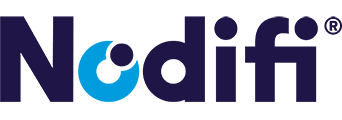“Equipment” is a wide paintbrush in the finance world. In this edition of Assets in the Spotlight, we take a look at what the term covers, rates and the general ins and outs of equipment finance.
Key Takeaways
- Typically commercial finance, the term equipment covers a huge number of assets
- Rates start at 2.85% but can vary considerably
- Loan amounts can also vary considerably depending on the asset type
- Like other commercial finance, applications often fall into three categories – full-doc, low-doc and no-doc
- Like other forms of asset finance, the condition, history and use can determine the loan details
Equipment finance in a nutshell
Most people think of factory machinery when they hear the term ‘equipment finance’, but it can mean a lot more. Of course, it does cover processing machinery like wine making apparatus, conveyors, refrigeration and storage facilities, but also restaurant, transport and trade equipment – that’s just to name a few.
Note: the majority of equipment loans are listed as commercial finance.
Below are some common types of equipment that can be financed:
- Yellow goods / earth moving equipment
- Forklifts
- CNC machines
- Heavy and light trailers
- Trash compactors (bailers)
- Agricultural equipment
- Solar
- Medical & dental equipment
- Printers
It’s a long list.
Fortunately, as a finance broker, you don’t need to be an expert in the types and variants of commercial equipment to assist clients.
Details of the loan purpose in loan applications
Typically, lenders require a brief description of the equipment. For example, ‘Shrink wrapping machine’. This may also include attachments and / or tools needed to operate the equipment.
They’ll also need the serial number(s) and listed prices.
If you’re unsure of the details or description needed for your client’s equipment, reach out to your Nodifi Relationship Manager.
The all important rates
Commercial equipment finance rates start at around 2.85%. Rates can rise above 2.85% when new or recently established businesses acquire used equipment.
As commercial equipment covers almost all industries, locations and business requirements, rates can vary considerably.
Use the scenario lodging tool which helps brokers keep on top of required documents, borrow amounts and rates per client specifics.
Nodifi is able to negotiate lower rates when dealing with large ticket lends.
Common rates per client profile
- New equipment / property owner / long-term ABN and GST / excellent credit score: 2.85 – 4%
- Used equipment (1-5 years) / property owner / under 3 year ABN and GST / average credit score: 4 – 6.5%
- Equipment over 5 years old / non property owner / minimal trading history / low credit score: 6.5%+
A business’s trading history, or the length of time a borrower has been earning an income, varies per lender and per financials.
How much can my client borrow?
Equipment can range dramatically in prices. For example, office printers may start from $5,000 – 10,000. On the other hand, large-scale factory processing machinery can command 7-figure prices.
$5,000 is the minimum lend amount (net amount finance). Typically, there is no set maximum amount.
The maximum loan amount often comes down to the borrower’s capacity to make repayments.
Loan terms range between 12 and 84 months depending on the lender and borrower requirements.
Documents and information
Borrowers will need to supply identification of the loan guarantor, a signed privacy consent form and their ABN details and / or financial documents.
Additional documentation can include assets and liabilities.
Depending on the borrower’s profile, commercial equipment loans are often split into three categories:
Full-Doc
These applications require all financial documents to prove income and serviceability. Accountant Financial Reports, BAS, bank statements and ABN.
Low-Doc
Some financial documentation is required such as bank statements. These suit clients with 12 months or more trading under ABN and a clean credit history.
No-Doc
No financial documents are required by the lender to assess the deal.
The loan amount and loan term are determined by these and additional documents and assessments.
Depending on the type of equipment and location, some lenders may require details of the installation. If this is the case, assistance can be provided during the application process.
Condition
Lenders need to know whether the equipment is new or used. This often becomes more of a requirement as the value and complexity of the asset increases.
Private sale transactions require third-party inspections completed on the asset.
Settlement
Turnaround times can, like rates, vary when dealing with equipment finance. This is due to the wide range of assets covered.
Generally, clients can expect turnaround times of one to two business days for an approval, especially when accessing low-doc and no-doc loans and new equipment.
Funds are transferred to the vendor but can also be sent to the borrower when a dual disbursement is required.
Some standout equipment finance from Nodifi’s vaults
Although the Assets in the Spotlight series don’t typically do so, we thought we’d add some examples of past equipment finance applications. Below are some standout examples that may be of interest to our partners.
Manufacturing equipment
A borrower was seeking $162,800 to purchase an edgebander for his cabinet making business. The director was a homeowner and the business had been running for over 6 years. However, the business had outstanding taxation liabilities and no up-to-date financials could be provided, meaning a low-doc option was necessary.
*An edgebander is a machine common in woodworking / carpentry.
Outcome
There are several lenders that will consider applicants that have tax debt. Being a homeowner, the customer qualified for the full loan amount under a low-doc option, only needing to supply 12 months of bank statements to show business income. After some
consultation, the client was approved for the machinery.
Wine making equipment
The borrower was an established company with a long term (5+ years) ABN/GST. The asset required was a $177,000 wine bottling and case packer machine. The applicant had a deposit and wanted to finance $100,000. Recent financials were not prepared, so a self-declaration form was the only option.
Outcome
Nodifi was able to get this application approved and settled with the client making the purchase.
Boat and supporting equipment
A hospitality venue was looking to purchase a boat, trailer and engine for $170,000. No financials were available, however, an accountant was able to attest to a suitable business use.
Outcome
Nodifi was able to reach approval as a low-doc product. The borrower made the purchase.
Equipment finance in summary
These assets can often amount to large ticket items and add a significant revenue stream to brokers.
Nodifi has seen the demand for trades and services increase along with the number of borrowers looking to start their own operations. This has been backed by government stimulus packages in response to the pandemic.
Equipment loans are common for sole traders or new enterprises looking to expand operations.




